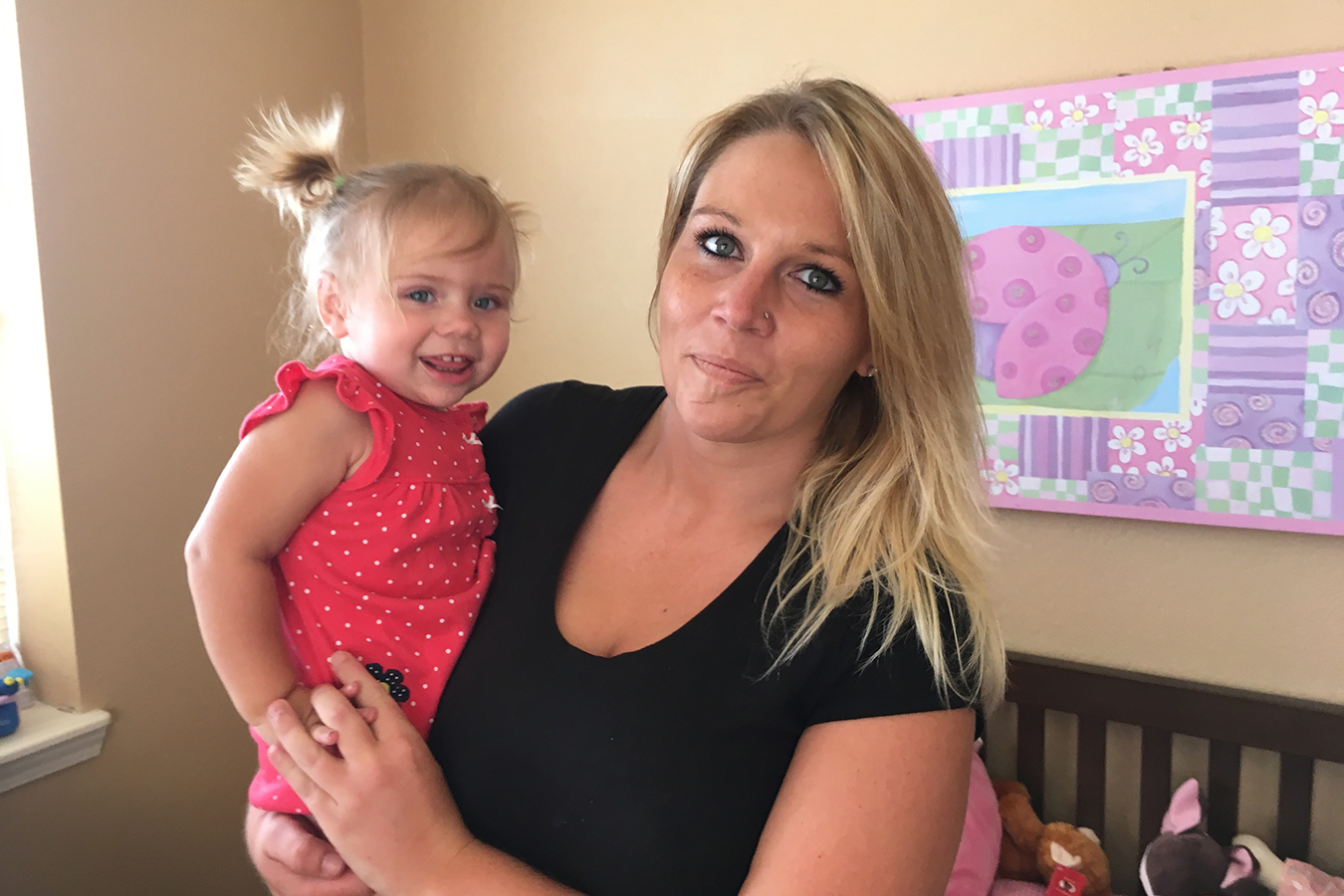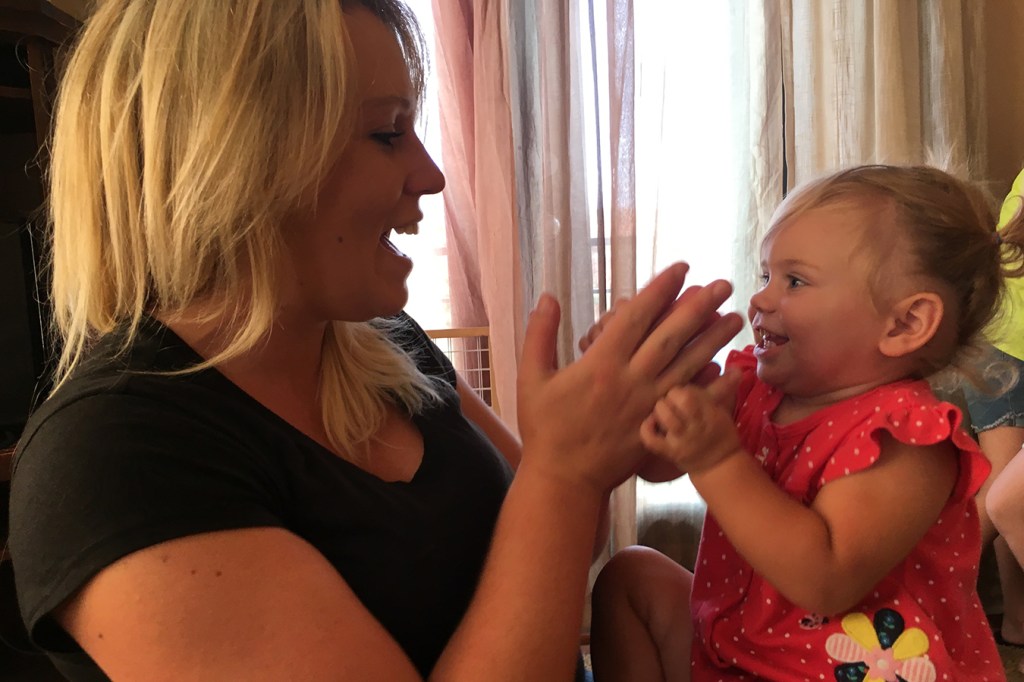Dr. Jodi Jackson has worked for years to address infant mortality in Kansas. Often, that means she treats newborns in a high-tech neonatal intensive care unit with sophisticated equipment whirring and beeping. And that is exactly the wrong place for an infant like Lili.
Lili’s mother, Victoria, used heroin for the first two-thirds of her pregnancy and hated herself for it.
“When you are in withdrawal, you feel your baby that’s in withdrawal too,” said Victoria, recalling sensations during her pregnancy. (Kaiser Health News is using her first name only because she has used illegal drugs.) “You feel your baby uncomfortable inside of you, and you know that. And then you use and then the baby’s not [uncomfortable], and that’s a really awful, vulgar thought, but it’s true. That’s how it is. It’s terrible.”
Though Victoria went into recovery before giving birth, Lili was born dependent on the methadone Victoria took to treat her opioid addiction. Treatment for infants like Lili has evolved, Jackson said.
“What happened 10, 15 years ago, is [drug-dependent] babies were immediately removed from the mom, and they were put in an ICU warmer with bright lights with nobody holding them,” said Jackson, who is a neonatologist at Children’s Mercy Hospital in Kansas City, Mo. “Of course, they are going to be upset about that! And so the risk of withdrawal is much higher.”
Jackson now leads a statewide effort to get hospitals in Kansas to use the science-based treatment methods for neonatal abstinence syndrome, as the condition is formally known. The symptoms include high-pitched screams, clenched muscles and trouble sleeping. The treatment involves keeping mothers and their infants together in the hospital, making sure babies are held and comforted, and providing opioids as needed in decreasing quantities to ease the baby’s symptoms until she can be weaned off of them.
It’s estimated that around 2 percent of infants are now born drug-dependent. In areas gripped by the opioid crisis, the rate is even higher.
The low-tech, high-touch treatment approach that Lili received in the first weeks of her life is one that health experts encourage hospitals everywhere to adopt as they grapple with increasing numbers of infants born with drug dependencies.
In many parts of the state, Jackson said, she’s starting from scratch.
“Many hospitals have no standard of practice. No standard approach,” Jackson said.
But improving outcomes for opioid-dependent babies will probably take more than just educating hospital staff.
Dr. Elisha Wachman, who is a neonatalogist at Boston Medical Center and teaches pediatrics at Boston University, said that providing this kind of care is a big adjustment for many hospitals.
“It really depends on the capacity of the hospital and where they house the babies for monitoring,” Wachman said. “Some of them don’t have room for the mothers to stay with the babies.”
Compounding the problem, the matter of exactly what are the “best practices” is far from settled.
For example, new research suggests that methadone may be a better recovery drug for newborns than morphine, which Wachman said is most often used, even though doctors are still unsure about morphine’s long-term effects.
“There are very few high-quality clinical trials that have been done in this population of infants,” Wachman said. “If you can imagine, this is an incredibly difficult population to study. To do a randomized, controlled trial, for instance, of opiates and neonates is incredibly challenging.”
Jackson acknowledged the challenges, but she said establishing consistent practices based on what doctors do know is an important first step toward getting answers.

Victoria used heroin during her pregnancy with her fourth child, Lili. Victoria says she could feel Lili’s distress in utero when she experienced withdrawal symptoms. Now 16 months old, Lili is doing well and her mother has been in recovery for 18 months. (Alex Smith/KCUR)
Victoria said she did everything she could to help newborn Lili get healthy in the hospital, with no idea whether they’d be together in the long term.
“I was trying not to be connected with her, because, I thought, they’re probably going to take her,” Victoria said. “I haven’t been clean that long. So I was trying to not, like, be in love with her. But I was so in love with her.” Lili is her fourth child.
Victoria has continued to show state officials that she is committed to staying off drugs. She has been allowed to raise Lili at Amethyst Place, a recovery home in Kansas City.
Lili is now a 16-month-old girl who shares her mother’s blond hair, bright eyes and big smile. Despite her difficult start in life, the toddler is in good health, and her mom has been drug-free for a more than a year and a half.
This story is part of a partnership that includes KCUR, NPR and Kaiser Health News.
KFF Health News' coverage of children’s health care issues is supported in part by the Heising-Simons Foundation.







